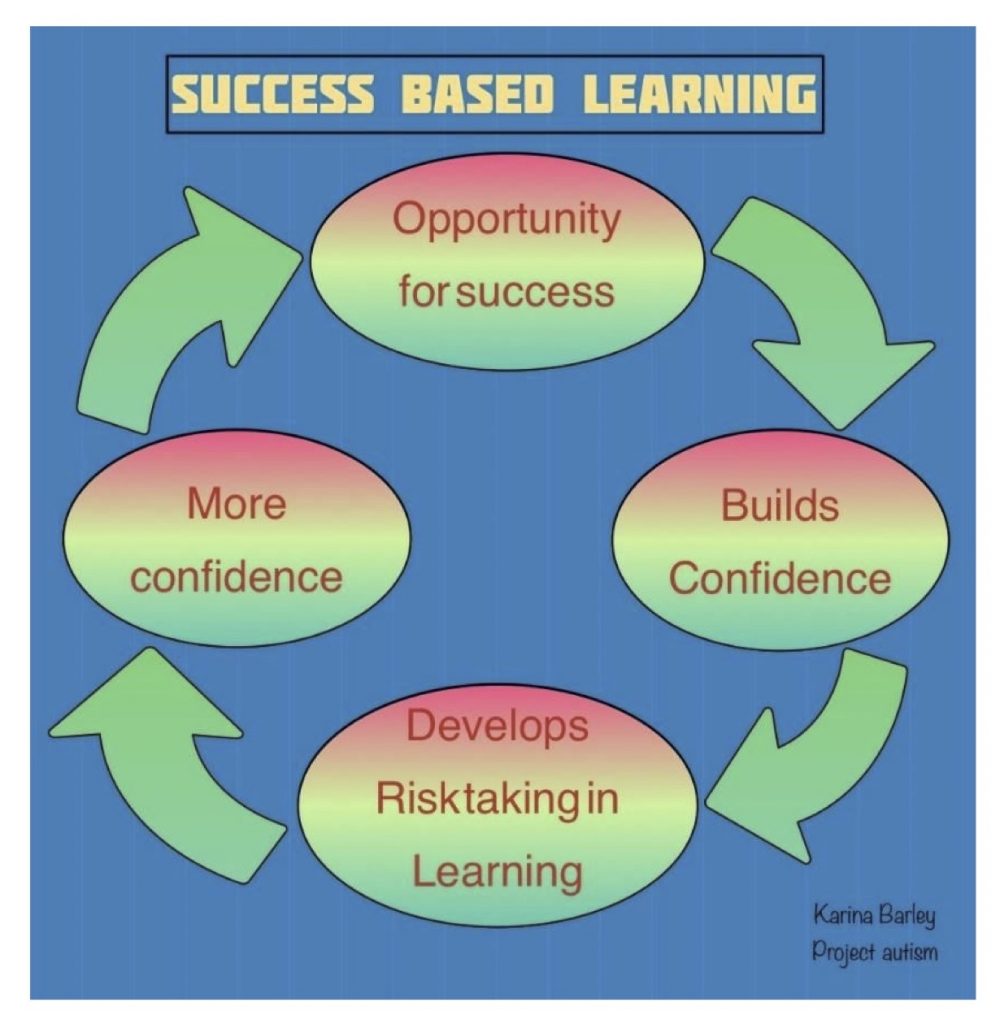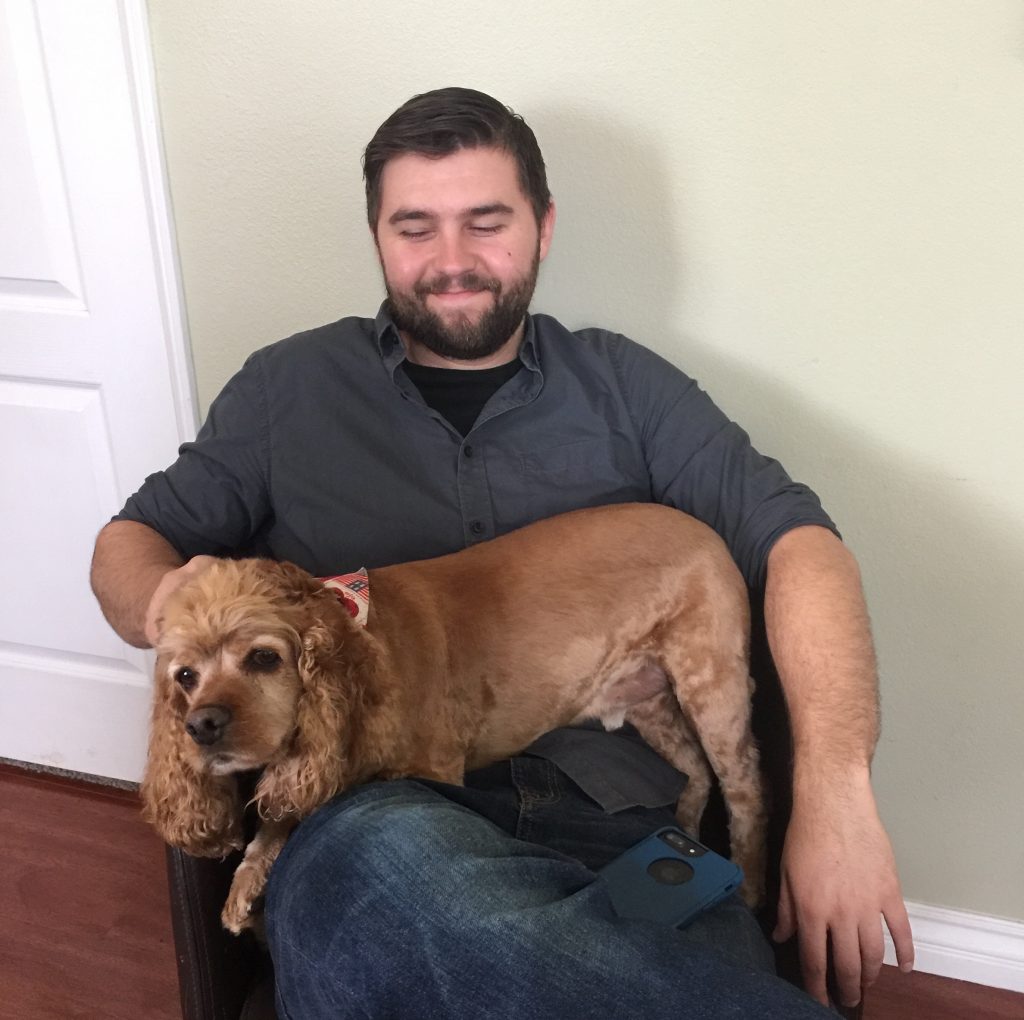Autism Awareness Children’s safety book
Safety Concern turns into a Children’s book for Autism Awareness
By Natasha Barber

When my son Joshua was seven years old, he did not have the skills to wait for anything. For example, when his iPad would buffer, Joshua had to wait for his show to continue, instead he would get upset and elope. This was a real safety concern because he would run and not look at where or what he was running into. During his autism therapy sessions, Joshua came up with a little song that he would use to cope with when being asked to wait. His The Waiting Song was turned into a picture book that other kiddos can use to help them cope with the same skills.
Joshua slowly developed the skills of waiting and patience
by singing his song and his elopement behavior slowly vanished; our safety concern for Joshua running into dangerous situations were no longer as serious a concern. We will always remain alert because Joshua doesn’t yet understand all the dangers around him and what can cause him harm, but with his tune, Joshua can cope with his emotions better, reframe the situation, and not bolt away from a safe environment.
A beautifully illustrated children’s book
The Waiting Song is a beautifully illustrated children’s book that gives readers a small look into the world of a child with autism. Children will meet Nigel, a four-year-old hedgehog, who is a lot like his other classmates, but unlike other students, he doesn’t talk or say many words. Nigel is not very good at waiting or taking turns but with the help of his mom, teacher and his Waiting Song, he learns to be more patient.
This wonderful book teaches children about autism while teaching the importance of being polite and waiting your turn. I hope that by capturing Joshua’s little song in a Children’s Book, it will help teach toddlers Autism Awareness and encourage understanding and acceptance of other children with Autism or other disabilities one book at a time.
Natasha Barber is an ASD advocate and creator of the non-profit Autism Moms Know Safety. She is also the author of numerous children’s books include the Tommy’s Lessons Book Series. She has appeared in numerous parenting blogs, as well as has her own blog in which she shares safety resources and tips to educate and raise autism awareness for those on the spectrum, while also providing solutions and essential tools that can help prevent wandering and elopement for guardians and dependents. Natasha’s autism employment advocacy at General Motors was also recognized with an an Apex Champion Employer Award and Private Sector Employer of the Year from the CAREERS & the disABLED magazine in April of 2018. You can follow her at NatashaBarber.org and AMKS.Life.
If I NeedHelp makes wearable iD and offers a free Caregiver controlled special needs registry for our loved ones who may wander or need assistance in a critical moment.
AngelSense GPS Is Life-Changing

Every Story is a Success with AngelSense
Parents of children with autism experience a level of fear and anxiety in moments that are ordinary for other children. For children with special needs, there is always risk. Children with autism are prone to dangers like wandering, and many of these children are also nonverbal. For many families, there is not a single moment of relief.
The designers of AngelSense – parents of special needs children themselves – designed the AngelSense GPS tracker with these special children in mind. AngelSense addresses the concerns of parents with special needs, and with unique technology, the safety of children with challenges like autism is prioritized.
AngelSense Is Life-Changing
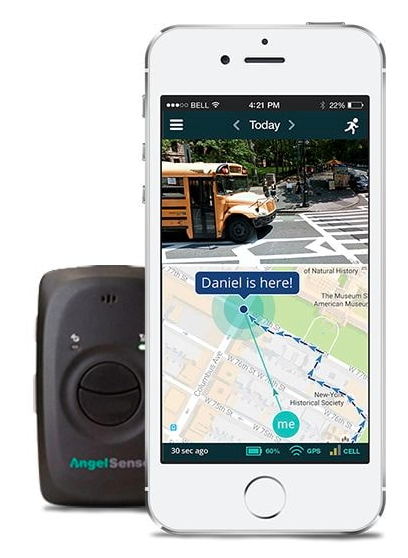
Consider the story of this family, that despite every alarm bell, locked door, and strong supervision, couldn’t always prevent their child with autism from wandering from home or other locations. Emergency services were called if their child went missing, and desperate alerts to the neighbors and teachers were made. Although their child was found safe each time, there was always worry that their child couldn’t be located in time to prevent tragedy. It wasn’t a matter of if, but when, the frantic search for their child would begin again. With wandering tragedies hitting the news regularly, the parents’ fear was palpable.
Then this family discovered AngelSense GPS for autism, and everything changed. It was like another set of eyes and ears that altered the entire scope of the day – from the moment their child left for school to the minute he went to bed at night. It made moments like the day he got off the school bus but never made it to the classroom so much easier to handle. In the shuffle of arriving students, the administrators lost track of this child for no more than seconds, but that’s all it takes. There was no way of knowing if the child had gone inside the building or had wandered off school grounds.
Found in Minutes

The AngelSense GPS tracker attaches discreetly to the child and is non-removable without the parent’s key. It communicates with an app on the parents’ cell phone. When their child wandered from the premises, AngelSense sent an alert to immediately inform the parents, who activated Runner Mode. In Runner Mode, live updates are given every 10 seconds to guide you directly to your child’s location as they are moving in real time. Luckily, this child was found in minutes rather than hours, completely safe and sound.
Had the child been in the building, the parents would have used a special alarm to help guide them to the child’s location. The parents can use the app’s 2-way voice feature to speak to and calm their child when needed, and to support him from afar. The call is picked up automatically on the GPS device which is secured to the child’s clothing. AngelSense also alerts caretakers to any unexpected stops or late departures, so you would know if your child’s school bus was late.
Peace of Mind
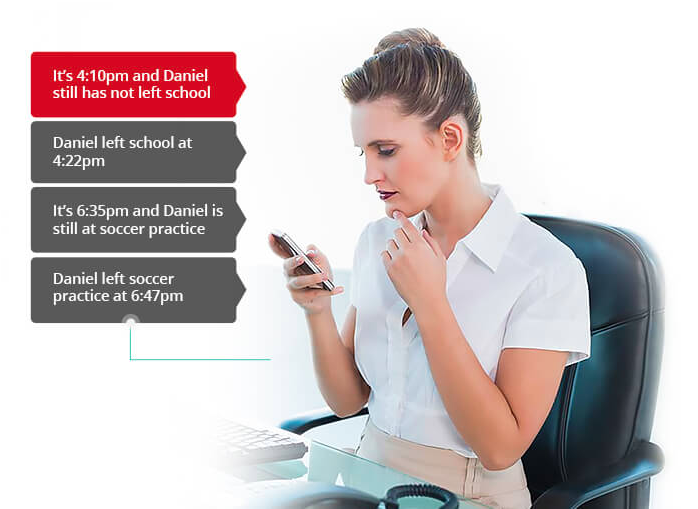
No other device offers the same freedom to both individuals and families. The AngelSense GPS tracker gave this child freedom to move in the hallways independently, inspiring confidence and improving life satisfaction. They no longer needed a 1:1 aid at school, and their child could learn to navigate familiar places on their own, building his confidence and independence. The family was also able to go on vacation for the first time, enjoying a new experience together without having to worry about elopement in an unfamiliar place. If their child was to wander, they had the tools in their hands to find him quickly and prevent harm.
When a child with autism wanders, it is a life-threatening event. AngelSense saves lives every day. The peace of mind that this family was given is invaluable. The AngelSense GPS tracker does more than offer reassurance to families of children with special needs and freedom to individuals; it has been proven to avoid harmful outcomes and save lives. There is no greater gift than peace of mind and the knowledge that your child is safe, where ever they are. Children with special needs are not always capable of announcing when they need help, but with the innovative technology that is being made available to families from AngelSense, help is always right around the corner.
If I Need Help makes wearable iD and offers a free Caregiver controlled special needs registry for our loved ones who may wander or need assistance in a critical moment.
A Voice for the Silent Ones
Reprinted/Posted with permission from the Daily Word
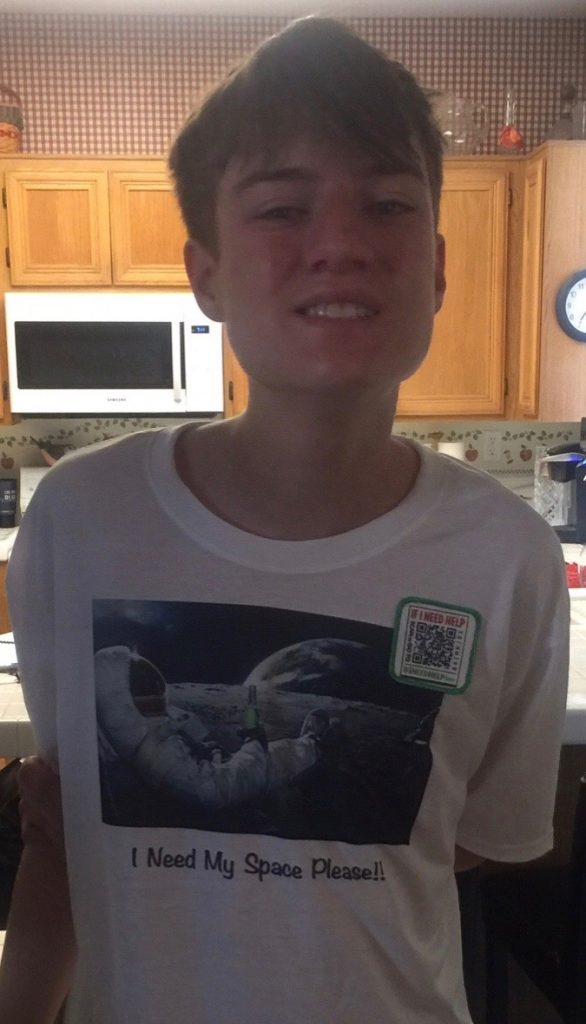
My life isn’t at all what I imagined it would be.
As a young person, I traveled, spending a lot of time in India and backpacking around Alaska. I figured I’d live in a cabin in the Rockies and spend much of my time hiking, hanging out in nature, and meditating. I even met my husband, Bruce, at a meditation center.
But the truth is, I barely ever have a quiet moment—and I never go hiking. At 46, my life isn’t what I thought it would be. It’s better.
Three years after our daughter Grace was born, I gave birth to our son, Jay. When Jay was about 2-and-a-half years old, Bruce and I started to suspect that something wasn’t right. We thought he should be talking more. He interacted differently with toys—constantly holding them but rarely playing with them.
When Grace was in kindergarten, we talked to a speech therapist at her school about Jay. After having him evaluated, we learned he was, indeed, delayed. When he was 3, we enrolled him in special education.
Jay started saying sentences,
but that didn’t last long. He had a major regression and lost all speech. He began running around the house screaming and engaging in other behaviors he’d never displayed before.
When Jay was diagnosed with autism, we were devastated and heartbroken. I wanted to hole up in a dark room and cry, but Bruce and I knew we had to pull it together and be advocates for our son. We consulted with a mother of an autistic child who told us step-by-step what to do to get help. We were able to get a significant amount of services for our son because we wouldn’t take “no” for an answer.
We’ve worked hard to give Jay the best possible life, to keep him safe. That’s why we were mortified in 2011 when Jay got lost at his school. Another mother found him alone on the grounds, just inside the gate. She knew Jay and how to approach him. She was able to take him by the hand and escort him to the office. Another time he got lost at camp.
An Idea Was Born

These frightening situations prompted us to found If I Need Help, a nonprofit organization aimed at keeping children and adults—especially those with special needs—safe in potentially dangerous situations.
When we came up with the idea for If I Need Help, Bruce and I were brainstorming; looking for ways to keep people like our son safe in emergency situations. It was then—when we were open and seeking—that this divine idea was able to land.
We created a variety of products—everything from patches to pins, clips to shoe tags— each with a special QR code. When the person is found, the code can be scanned by a smartphone or tablet, or their number can be entered on our website to access pertinent information in an emergency. These products can, quite literally, save lives.
Reaching Others
A woman named Denise Carter shared a heartwrenching story on her Facebook page, “And Then They Grow Up.” Denise was driving to McDonald’s with her adult son, Matthew, who has Down syndrome, autism, and is nonverbal. A woman talking on a cell phone ran a red light and hit Denise’s car at 40 mph. Although Denise was incapacitated, she was alert enough to know that her son, while unhurt, wouldn’t be able to communicate anything about himself, including his name.
Denise discovered our company after the accident and told her Facebook followers about our products. Her story, posted on our ifineedhelp.org website, went viral. In just a few days, we had more than a thousand orders and membership on our website quadrupled. I couldn’t think about the magnitude of what was happening. I focused instead on being thankful— and on making our new customers feel special.
I’ve had a lot of sadness about my son’s disability, but my faith has remained steadfast. Through our nonprofit, I believe we’re serving a higher purpose—one I could never have imagined for myself.
My Purpose in Life
At 13, our Jay is a big boy. He just started junior high. He finds joy in blowing bubbles. He loves to run and jump. He enjoys watching and caring for people. He likes to feed me.
But Jay also has a lot of anxiety. We drive around the canyons around our home in Santa Clarita, California, because it’s one of his favorite pastimes. When he’s escalating, I start to chant. While he’s very low verbal, Jay comes into the chant. Before long, he’s peaceful again.
Sometimes when he’s agitated, I’ll have him sit on the couch, put his hands in his lap, close his eyes, and meditate. While he doesn’t stay there long, it changes his entire demeanor. These kinds of experiences tell me he’s a very spiritual young man.
I’ve always felt that at the end of my life, I’m going to say it was Jay who brought me to my purpose in life.

Erin Wilson is cofounder of the nonprofit ifineedhelp.org with her husband Bruce. Their son Jay has severe autism and had gotten lost in the past. Creating If I Need Help has been a labor of love to protect him and others who have special needs.
Special Needs Podcasts: Patreon Page
Special Needs Podcasts
Announcing the launch of a Patreon page for the special needs community!
Its purpose is to disseminate important and useful information to those who work with or care for anyone with special needs via special needs podcasts. One of the biggest problems faced by this group is not only a lack of certain resources, but also the lack of a knowledge base on how to access and use the resources that are out there. Most parents and caretakers of PWSN are forced to reinvent the wheel every time they seek answers about where to look or who to contact to resolve a particular need or problem they have. This page offers a solution to that problem.
Gilda Evans is creating a series of special needs podcasts
dealing with all sorts of topics and issues, from education, to government benefits to housing and almost everything in-between. Many of the special needs podcasts will include guests that come on to share their particular expertise. Every now and then Gilda will also be producing podcasts in Spanish on certain topics. Check out the free podcasts, and then support this important work by becoming a Patron! Here’s the link: https://www.patreon.com/GEspecialneeds
Entrepreneur, producer, director, author…and most importantly, proud mom! If you’re curious, you can find out more on my website at www.gildaevans.com or follow me on social media like Facebook, Twitter and LinkedIn.
If I Need Help makes wearable iD and offers a free Caregiver controlled special needs registry for our loved ones who may wander or need assistance in a critical moment.
Autism friendship skills
How to Help Your Child with Autism Make Friends

Every parent dreams of who and what his or her child will be.
Will she be an academic or an athlete? What will his interests be? Will she attend college or start her own business? While these are the questions that parents of most children are asking, as a parent of a child with autism, you may be more concerned with answers to questions like…Will he attend school? Will she get bullied? Or even, will he ever have a friend? How do you help improve your child’s Autism friendship skills?
And as somber as it is, that last question is reality for many parents of children on the spectrum. Autism not only affects learning and development, it also affects one’s ability to interact socially and form friends. If you’ve ever experienced anxiety over approaching a new friend or potential colleague, consider what that would be like if you were unable to read social cues, such as body language, hand gestures, tone of voice and even facial expressions. This is the reality for your child with autism.
With that, your concern regarding your child’s ability to make friends is valid. But fortunately, there are a number of ways you can support your child’s attempts to make friends and even foster an environment in which he or she can do so. Use these tips as a guide to help your child begin developing the Autism friendship skills he needs to establish positive relationships with peers that have the potential to transform into lasting friendships.
And before we start remember you are not alone. You are now part of a giant special needs community. There are therapists, school districts, teachers, aides, support groups, state agencies, health insurance companies, and other similarly affected families to help you in this. Not only will you be connecting to incredibly dedicated experienced talented people to help your kiddo but many of them will become your good friends as well.

Here we go:
1. Start with the basics.
Before you can begin to expect your child to want to form relationships with others, you need to help him develop an understanding of what a friend is and what friendships look like. So start with the basics. Help you child “define” what a friend is by sharing qualities you appreciate in friends, such as caring, accepting, sharing interests, etc. You can also have conversations with your child about what a friend is not, asking questions that include, “Do you enjoy being around someone who calls you or others names?” or “Would you rather spend time with someone who’s kind and helps you?” You may even want to engage in role playing to demonstrate different interactions your child may expect when first trying to get to know friends. For example, you may demonstrate how to introduce yourself and ask the acquaintance’s name, and then reversing roles.
2. Create opportunities.
Because your child has difficulties with social interactions, it may be unlikely that they initiate conversations on their own, especially in the beginning. Do your best to create opportunities for interactions to practice the “basics” you’ve been working on. If you have a young child, trips to the park, play dates, and other social opportunities are great places to put their Autism friendship skills into practice. Play dates are especially beneficial as you can control some of the variables involved, including location, number of children present, and even activities. If your child is older, look for social groups, clubs, or even teams in which your child can participate. It may take some additional support in the beginning, but these experiences can be invaluable for helping your child develop effective connections.
3. Focus on the long-term.
As hard as it may be to see your child struggling to make friends now, remember that the goal is to help them be able to develop lasting relationships long-term. So instead of expecting a whole group of new friends tomorrow, think about where you want your child to be 5 years from now. And then from there, focus on breaking down the autism friendship skills they will need to reach that goal. This approach also helps you celebrate the “small wins” along the way, which can help keep you both stay motivated toward developing new relationships.
Regardless of how difficult making friends is in the beginning, remember that it is a process that you and your child are both learning together. And don’t get discouraged. Making friends is a lifelong process for everyone that doesn’t ever have to be “mastered” when mutual companionship is the goal.
About the Author:
Caryl Anne Crowne is a media specialist and contributing author for the Aveanna Healthcare Blog. She regularly produces content for a variety of pediatric therapy blogs covering topics such as autism, speech therapy and general medical solutions.
If I Need Help makes wearable iD and offers a free Caregiver controlled special needs registry for our loved ones who may wander or need assistance in a critical moment.
Learning about your sibling with special needs
Teaching your child about their sibling with special needs
As a parent, you make a point of treating your children equally.
It’s a goal to make sure that neither child feels left out or mistreated, which can lead to isolating feelings. But what if one of your children is made just a bit differently? Talking to your child about their sibling with special needs can be a confusing conversation to have. The discussion requires patience, understanding, and concrete direction to help your child be the best sibling they can be.
Set the Stage
Your child with special needs may require a great deal of attention, unintentionally leaving you without much alone time with your other child. Be intentional in actively finding time to speak with your child alone about their sibling with special needs diagnosis. Having a quiet and intimate conversation will create an environment where they can ask questions without feeling as though they’ll hurt their sibling’s feelings. Getting to have rare alone time with you will also aid in making the process feel more supportive and loving. Often times, the siblings of those with special needs feel as though they aren’t allow to voice their frustrations, due to the lack of privacy and expectation to behave as the mature, supportive sibling.
Use this time to help them connect the dots. After all, they spend a lot of time with their brother or sister and have probably noticed some differences in their behavior. Introduce the concept that their sibling faces unique challenges causing differences in their behavior or feelings, the help they require, or way they are treated. If their sibling is autistic and has sensory issues, place emphasis on this connection to their challenge. If they have Down Syndrome, explain why this results in a distinct facial appearance. By connecting cause and effect, you can offer rest to any confusion they may have.
Give the Facts
Your child may be too young to fully understand the complexity of their sibling’s challenges to the extent that you do, but this doesn’t mean you can’t build an awareness. Provide them with accessible mental health information that can make their introduction to their sibling’s special need smoother. Read through the resource together and provide examples of your special needs child’s unique accommodations or behaviors as a way of tying this information close to home.
Delve into more detail regarding the cause and effect you touched upon when introducing the conversation. Often times, true acceptance of these behaviors will only come with time as your child matures. Offering information, however, will provide them with context to work towards accepting. In its simplest terms, work to explain the neurological and biological differences that cause their sibling to experience life in a distinct way. Make it known that these distinct characteristics may be difficult for your child and others to navigate but is not something their sibling has control over. This can eliminate resentment down the road that their sibling is ‘ruining their life’ or behaving in ways to monopolize attention.
Why this is Important
As the parent, having this discussion will allow you to uncover various emotions your child may be experiencing as they begin and continue their journey with a sibling with special needs. This, in turn, will serve as helpful material for managing your child’s mental health, which may often times fall behind due to the amount of attention their sibling’s challenges require.
When living with a special needs sibling, a child may experience conflicting emotions. On one end, they may feel worried about their sibling and the way they are treated. On the other, they could feel resentful that what they view as ‘normal’ activities or family outings become much more taxing with their sibling with special needs present. They could also feel pressure to be ‘perfect’ for their parents while experiencing anger that the attention from family, teachers, and other resources are focused on their sibling.
Getting the chance to address these overwhelming emotions will remind your child that you are present, care about their feelings within this unique situation, and are always an open resource for them. This sometimes gets lost in translation within the trials and tribulations of having a special needs child. Let your child know that, although their sibling does require a lot of attention and special resources, their needs aren’t forgotten.
Explain How they Fit in
As much as you want your child to take on the protective sibling role, this has the potential to quickly lead to resentment. Framing your child’s role in their sibling’s life as that of the protector will place immense pressure on them to transition into a parental figure at a young age. This can lead to more anxiety over needing to be perfect as well as anger towards having to focus a great deal of their life on their sibling.
Refrain from words like “protector” or “role-model” when discussing their part in their siblings life, and don’t set strict guidelines for how they must treat their sibling. You can suggest ways that you’d hope your child would react to specific things that their sibling does, but more often than not it’s better to let your child take the lead. Each child goes through their own process of coping with having a sibling with special needs, and you need to be prepared to let them go through these steps in their own time. Some children may adapt quickly and with great patience. Others may experience embarrassment when their sibling has difficulty in public or anxiety about how to introduce them to their peers, and this may result in them pulling away.
Much of this process depends on maturity. Continue to frame their sibling’s challenge in a positive light, seldom showing frustration in front of your child. Instead, frame their challenges with as much light-heartedness and humor as possible to convey that their presence in your family is not a burden but a unique blessing. In time, your child will adopt this similar mindset and reintegrate their sibling into their life. No child fits into a single box- this you know having a child with special needs. Your other child is no exception, and enabling them the freedom to navigate the information you’ve given them at their own pace can ultimately help build a better relationship with their sibling.
If I Need Help makes wearable iD and offers a free Caregiver controlled special needs registry for our loved ones who may wander or need assistance in a critical moment.
Special Education: Three things I know for sure
Three things I know for sure from my experience as a Special Education Educator

By Karina D. Barley (Diploma of Teaching, Post Graduate Diploma of Education, Masters of Education – Inclusive and Special Education, Certificate of Educational Research – Special Education)
I have been a teacher for over thirty years; ten of which I spent in special education.
I am currently in the privileged position of teaching pre-service and current teachers both at University level and in Professional Development courses. To encapsulate what I know into three dot points is somewhat challenging, so I thought about what I wished someone had told me when I began my teaching career. This helped me to define three things I know for sure, which are:
The first job as an educator is to provide a foundation that is firmly set in trust, confidence and knowledge of your students. You need to get to know your students; what makes them who they are and what makes them ‘tick’? When you have this knowledge, you can then cater to their needs, build their trust and confidence in you, which will in turn provide them with trust and confidence in themselves and their learning. I honestly do not believe you can be the greatest teacher you can be without this. In partnership with this premise, is a question to ask yourself: What is the legacy you want to leave? In twenty years’ time, how do you wish to be remembered by your students? I hope the answer is that you want to be remembered as a compassionate, caring teacher who inspired and believed in each and every student.
NEVER assume what a student can do.
Secondly, we should NEVER assume what a student can do. It is easy to get caught up in test scores, IQ, performance, reports etc. and forget that we are working with unique individuals. If a student is nonverbal, this does not also mean they are not capable. If a student has a disability, this does not mean they do not have potential. I firmly believe each and every child has potential and possibility and it is us up to us as educators to assist each child to attain their best. When we believe in an individual, it is far easier for them to believe in themselves. Your job is to motivate and provide lots of experiences of success.
Success begets success.
The previous point, leads me to the next. Success begets success. I believe that learning is a cycle. When we focus on what students can do, rather than what they can’t do then we provide them with constant feelings of success. This builds confidence, which in turn reinforces ‘risk taking’ in learning, which leads to more success. What evolves is a cycle of successful and success based learning. One of the problems for students who have a disability is that teachers focus upon their deficits, consequently these kids experience ongoing, daily incidences of failure. Making them do what they cannot do over and over shatters their confidence and creates fear around learning. These students eventually develop the mentality that they would rather not try anything, than try and fail. However, if as educators we offer daily experiences of success, then student confidence builds where they are more likely to try new things. When we allow individuals to feel good about themselves, they are less concerned about getting something wrong. This focuses on developing strengths, independence and autonomous learning.
Karina offers Professional Development for educators with Continuing Education Associates (CEA) in the USA and with Teacher Training Australia (TTA) in Australia. She is also an Associate Teacher at Monash University, Australia.
If I Need Help makes wearable iD and offers a free Caregiver controlled special needs registry for our loved ones who may wander or need assistance in a critical moment.
Top 10 List for Parents Prepping for an IEP Meeting
IEP Meeting Prep tips
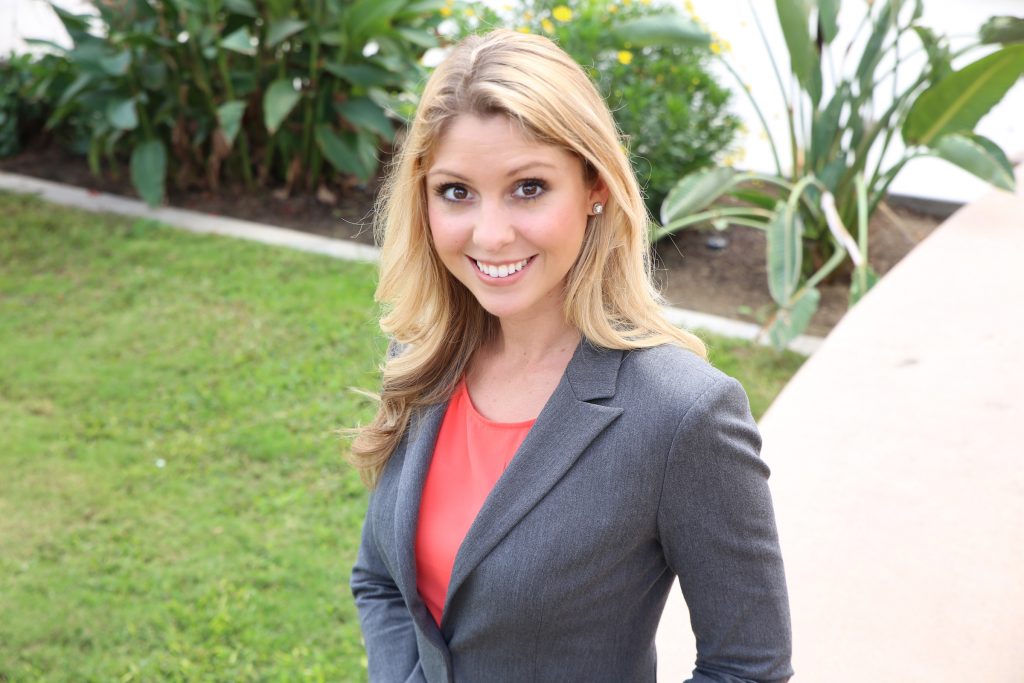
by Jazmine Gelfand: Jazmine is a special education attorney who offers education and disability legal representation to the greater San Diego community.
- Make sure the IEP meeting is scheduled at a time that is convenient for you. The school team can work with your schedule, to a reasonable extent, and should not meet without you. You can also participate by phone.
- Share your concerns with the IEP team in writing in advance. This helps to guide the discussion and ensures the school team is prepared to develop goals and offer services and/or evaluations in these areas.
- Provide any relevant updates from private providers ahead of the meeting. The IEP team is required to consider all outside information, so you can feel free to share private evaluations, progress reports from private providers, or any written documentation you feel might be helpful for the team to review.
- Ask that copies of the draft IEP be provided 24-hours before the meeting. While the District cannot “predetermine” placement and services, and parents must be included in developing the IEP, requesting copies of the proposed goals and present levels of performance prior to the meeting will allow you to review the documentation thoroughly before the team discussion. This also helps you to use the meeting time as efficiently as possible. Similarly, ask that copies of assessment reports be provided at least 24-hours in advance.
- Don’t be afraid to tape record the IEP meeting. While it can seem awkward to tape record your IEP meeting, school teams are used to this practice, and it shouldn’t inhibit the discussion. Having a recording allows you to relax during the team discussion, knowing that you can always review the recording if you need to refresh your memory later. You will need to provide 24-hours notice in order to record.
- Bring support! You can bring an attorney, advocate, or anyone familiar with the student. Don’t feel like you have to go into the meeting alone. You are permitted to bring a representative to the meeting with you, and can invite anyone who is familiar with the student’s needs and abilities. Examples include a babysitter, service provider, or family member. If you are bringing an attorney, give the school team at least 24-hours notice, as they may choose to be represented, as well.
- Know who is required to attend the IEP meeting. Mandatory IEP participants include the parent, at least one general education teacher if the student is or may participate in the general education setting, a special education teacher, and a representative from the school district/educational agency (often an administrator from the school site). Also, if assessments are being reviewed, a person who is qualified to interpret the assessment results must also attend.
- Leave with a copy! Even if the team still needs to finalize the changes, request a copy of the draft with notes, or at least the notes page. The school team should always be able to make you a copy that day.
- Don’t sign the IEP at the meeting! IEP meetings can be stressful and overwhelming. You always have the right to take a copy of the IEP home with you to review, then sign once you are completely comfortable with the proposed goals and offer of services.
- Remember, you can request an IEP meeting at any time! You don’t have to wait for the annual review, or for the District to call one.
Jazmine Gelfand (specialedlegalcare.com) is a special education attorney who offers education and disability legal representation to the greater San Diego community. Jazmine has been passionate about advocating for children’s education since beginning her undergraduate studies, and she graduated with a B.S. in Early Childhood Development. After enrolling in law school, Jazmine helped create a new student organization on campus, Advocates for Children and Education, which developed several outreach programs to support children’s education rights. She first became interested in the area of special education law after interning with the San Diego Volunteer Lawyer Program’s Education Project. Jazmine also participated in several on-campus clinics, including the Child Advocacy Institute’s Policy Clinic, and the Special Education Legal Clinic, where she represented the rights of low-income students with special needs.
Upon graduating with her J.D. from the University of San Diego School of Law, Jazmine was awarded the 2014 James A. D’Angelo Outstanding Child Advocate Award, as well as the pro bono service award, in recognition of her contributions to San Diego’s low-income community.
Jazmine is committed to providing aggressive legal representation for her clients, while being sensitive to the need to work collaboratively, under a solutions-oriented approach. She is admitted to practice law in all California state courts.
Adult Services, Critical transition knowledge
3 Things I Know About Adult Services
By Jonathan Flint Executive Director of California Spectrum Care.
The world of mental health services can be a scary and unpredictable place. It’s difficult to navigate, lonely at times, and on occasion downright unfair. Although, at least for California residents, we are lucky to have the resources and services offered statewide. It’s reasonable to say it’s a tough system to navigate. From the time your son or daughter get into school, you are their advocate and doing everything in your power to increase their chances of success. Some parents are able to triumph more than others, and more times than not; it’s because they know more about available resources and the laws that govern them. Through the years, you and your child work hard overcoming challenges until eventually they graduate or age out of the school system. Through my years of experience, I’ve learned three main components about preparing, obtaining, and utilizing Adult Mental Health Services from my own trials and errors.
1. Adult Services, Preparing For Transition Is Paramount
Transition planning is of the utmost importance when discussing Adult Mental Health Services, which is why I wanted to introduce this concept first. Transitioning to independence is similar to completing a puzzle, there are many pieces and they all have to be laid out and shaped just right so that they fit together. With different shapes, patterns, and colors, you could accidentally put two pieces together that you think fit only to find out they do not. It’s ok. What most people are not willing to admit is that most of the mental health field is trial and error. Trying to make something work and finding out it doesn’t is a success in its own right, and it’s something you want to happen sooner than later. The last thing you want is to travel down a road longer than you should only to find out you’ve been going in the wrong direction. But remember, you can consider crossing out a possible solution a success because it means you’re that much closer to finding the right matching pieces
Starting the transition process five years before graduation, or as soon as possible if you are already past that point, is paramount. The reason is that as your child gets older they will have a shorter amount of time to make mistakes and find new paths. As you age, it is harder to learn new skills, find a job, and most importantly – break old habits (what we refer to as “behaviors”). Also, it gives your son or daughter a head start on thinking about their future. They are just like everyone else in this world. They’ll want to be 100 different things before they find their calling. I thought I was going to be Evel Knievel, then an archaeologist, then a movie director, then a few other things before I decided I wanted to be a Director of a nonprofit organization. Let’s not deprive our kids of that same valuable time of trial and error and experience. Simple questions like “What do you want to be when you grow up?” and “Where do you want to live?” are all valuable questions to ask someone in high school.
If you are thinking your child’s diagnosis is too debilitating for them to think about their future the way I’m describing, this still pertains to you! Don’t ever think your son or daughter is “too severe” to be more independent. One day they will need to be able to function without you. In many ways, the transition process is also about the parent’s future involvement or lack thereof. You also need to think about where you want to be in the future and how your child’s life interacts with it.
When I talk about transitioning to adult services, I think about a few main components:
1. Housing
2. Health
3. Employment/Income Source
4. Quality of Life
a. Social life
b. Social diversity
c. Self-determination
5. Support Services
a) Independent living services
b) Social skills training/groups
c) Job skills training/coaching
d) Transportation
Where do you fit in these categories in your son or daughters life right now? Where do you need to be for them to be as independent as possible, and eventually; how do you transition out of each of them systematically?
Quick side note: Your plan is your plan. I’m not trying to lecture that 100% independence is what your plan should be or that you’re wrong if your plan or opinion is different than most. I’m simply stating that your child could be without your assistance one day and that in itself is something to plan for.
Continuing on, at the end of the day these aspects of your son or daughter’s life are essential. All of the components above interact with each other in some way and they need to be able to do so cohesively. Setting up a system where your service providers work together, target goals together, and operate in a consistent fashion can be planned in your IEP, IPP, or a MAP (making action plans) meeting when starting a new service.
2. Perfection Should Not Be The Gold Standard
When the leadership team and I co-founded California Spectrum Care we sat down and really thought about what we wanted to do as an organization. What would the function of the organization be? Why were we creating this program? We felt all roads lead back to neurodiversity.
I think the stigma around mental health is changing quickly, or at least faster and on a broader scale than it was before. However, a lot of the conversation is about what society or the general public can do for the developmentally challenged population. We want to spread awareness, get people educated about Autism Spectrum Disorder, and other diagnoses yet we teach little acceptance. On the other hand, I have experienced a culture within the population I serve that lacks accountability for what we should all be doing as service providers. We also need to be aware of the needs and concerns of the general public.
I’m not saying it’s the client’s sole responsibility to be accepted by the general public. I’m saying that there needs to be a compromise between the diagnosed population and the general public. We can’t expect the general public to be ok with someone having a meltdown in the middle of Starbucks because their triple chocolate swirl is going in the wrong direction. But, we can expect the general public to listen to an iPad communication application when taking an order for that triple chocolate swirl. We can teach accommodation, acceptance, and awareness to both sides of the fence until it appears that there is no fence at all.
The clients I serve are wonderful and not weak by any means. They face bigger challenges than I do, and I respect that about them. I have a duty to teach them and ready them for the next phase of their life, whatever it may be. I also have a duty to teach the world around me how to work with them, how to let down their own social inhibitions, and generally accept that they will meet people who are not like them.
So, when I say perfection isn’t the gold standard, I mean celebrate the progress that your child makes and celebrate who they are. Better yet, accept it. If they are happy, healthy, and safe, who’s to say anything is wrong? That could become the ethical debate of the century. But I like to think that we are all just a little different and none of us are perfect. Let’s accept people for who they are, teach them the skills they absolutely need and help them achieve the goals they want to accomplish. It’s very easy to get hung up on the parts of someone’s life or behavior, as a service coordinator, that isn’t necessarily holding the client back. We should prioritize someone’s skill development and then objectively look at who they are as a person and what really needs to be changed for success.
3. Freedom of Choice
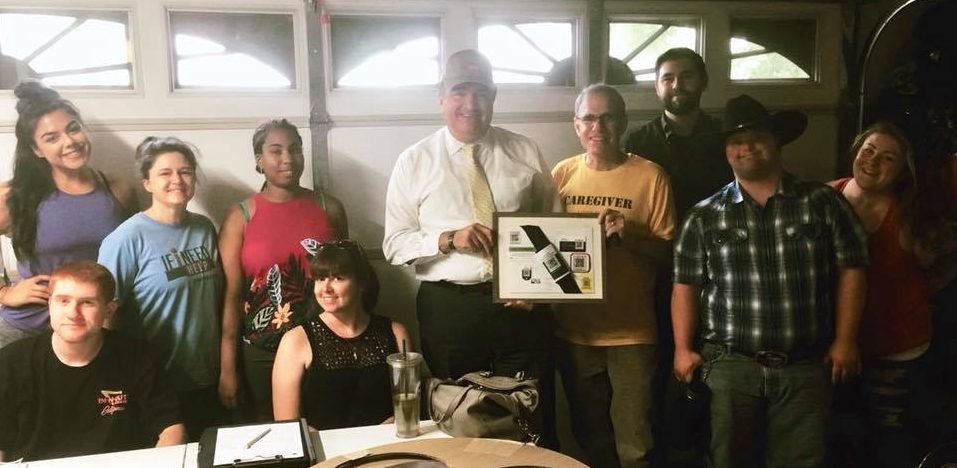
Assemblyman Dante Acosta learning about California Spectrum Care and If I Need Helps Wearable iD & Special Needs Registry
We need to stop making choices for adults in Adult Services. Is there fine print in that statement? Yes. It reads: “If they are not impacting their immediate health, life, or mental wellbeing – let them learn from their own actions.” I can’t stress this enough. However, this all ties in with our first point. You need to allow your child to have enough time to make mistakes. Incidental learning and the power of choice is something that cannot be matched. It is the most natural way to live your life and learn in the process.
If you are a parent of a teenager (or older), you know that power struggles can be exhausting, long lasting, and damaging to a relationship. There really is no winner. At the end of the day, we should empower individuals. One day we won’t be there to protect them and the confidence we instill in our youth now will help them out when we are not able.
How can we translate this into adult services?
I think the best way to do this is with person-centered planning. All goals should follow what the client wants as long as it isn’t inappropriate or unfeasible beyond the means of the support staff. You should never be limited to what your service provider can do or what they are willing to do. If you are, find a new service provider. They shouldn’t take up your time or effort (and vice versa) if the goals of the client cannot be achieved in theory.
We should also never condemn, judge, or quickly critique someone’s goals and ambitions. We are who we are, so let’s be accepting. It’s your child’s life to live. They deserve to pursue it. Some might find this outlandish. I can hear my customized employment mentor now… “Jon, don’t get caught in the dream job trap!” Well, he has a point, but again, everyone deserves a shot to prove themselves. After that, we can talk about more realistic goals to obtain their dream and use earlier goals as a catalyst for success.
Removing the power struggle and giving the reins over to the person who has to live with their outcomes is what creates the human element missing from some adult services. Once we start teaching the art of doing something for yourself and for your future, the quicker we get away from the Applied Behavior Analysis style reward systems that are unnatural.
Jonathan Flint is the Executive Director of California Spectrum Care. California Spectrum Care is a Southern California nonprofit dedicated to servicing individuals diagnosed with autism and other developmental disabilities
If I Need Help makes wearable iD and offers a free Caregiver controlled special needs registry for our loved ones who may wander or need assistance in a critical moment.
The Lookout
The lookout! NonVerbal Autistic ESP
I am not generally a believer of extrasensory perception, ESP.
However, there are some things that occur that make me feel there are things we don’t understand. If you take away one of a person’s senses, eyesight or hearing are the usual examples, that person’s remaining senses improve. That has been scientifically studied and proven. I wonder, if you remove a facet of a person’s ability to communicate, will other communicative abilities make up for it? My sons are both nonverbal autistic. While my oldest will repeat one syllable words, my youngest has never spoken. Somehow they communicate with each other. They plan heists, usually cookies or other sweets. My funniest example is the first time I caught them. I would see my 2 year old at the time stick his head out the kitchen door, smile, giggle, and go back to hiding. After the third time, I got suspicious. Yeah, I know, the silence from the other one should have clued me in. So, I sneak around the back way and to my surprise I see my oldest son teetering on his tippy toes on the chair reaching for the cookie jar on top of the refrigerator. My youngest son was obviously acting as the worst lookout. To this day, I regret my next action. Worried about the precarious position my oldest son was in and taking my responsibility as protector of cookies and appetites, I shouted, “what are you doing?” my oldest looks at me in horror and quickly gets down. My youngest never looked back, running straight ahead to his room.
To this day, I wonder, what would have been the plan if I got up to go into the kitchen the normal way. How would the lookout have warned his brother?
The Lookout NonVerbal Autistic ESP
Armando Sandoval
The Autism Society of Texas-El Paso
https://www.facebook.com/AutismSocietyEP/
If I Need Help makes wearable iD and offers a free Caregiver controlled special needs registry for our loved ones who may wander or need assistance in a critical moment.






